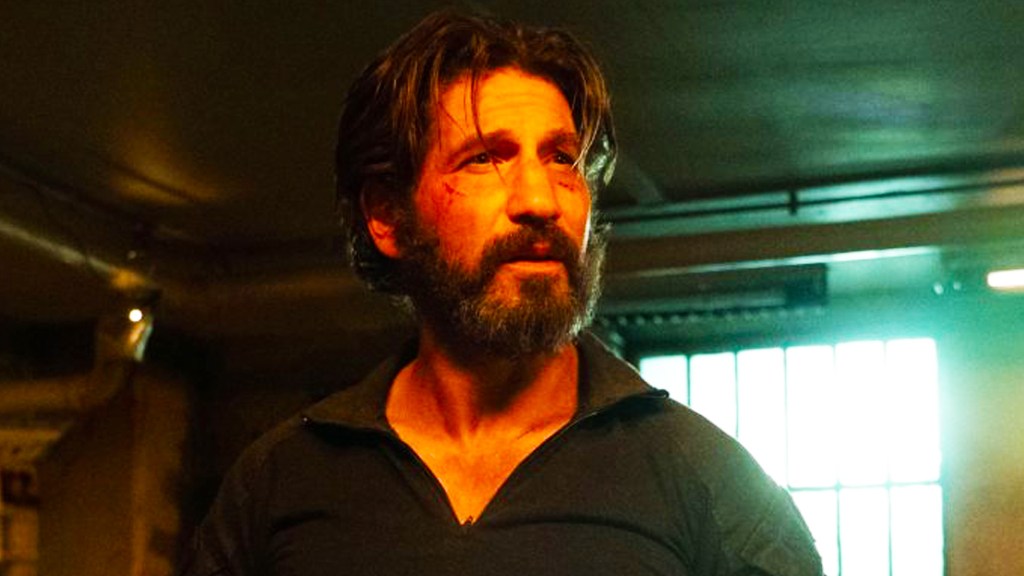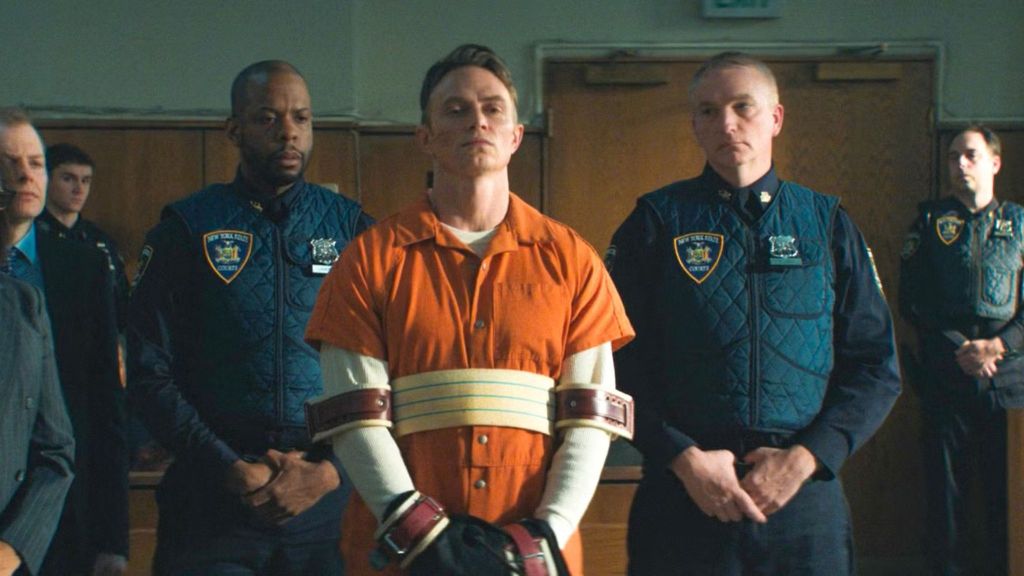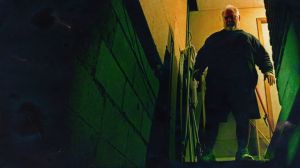Few characters in Marvel Comics history have made the jump from page to screen as successfully as Charlie Cox’s iteration of Matt Murdock/Daredevil. First brought to life on Marvel’s Daredevil on Netflix from 2015 to 2018, the series quickly became a gold standard for comic book storytelling, and not just on TV. The moody, character-driven story, all centered around the title hero’s steadfast commitment to his home borough of Hell’s Kitchen, became proof that these Marvel heroes could be adapted well, even despite failed attempts in the past.
Videos by ComicBook.com
Then came Daredevil: Born Again, a soft reboot as part of the MCU’s expanding roster of Disney+ shows. The new series brought a number of changes, some more welcomed than others. Daredevil: Born Again kept parts of what made Daredevil great in the first place (mainly the reliable presence of Charlie Cox), but other elements fell short. Some characters were completely transformed or written out entirely, while others were finally given the spotlight they deserved. With that in mind, here are five characters the Netflix show and Born Again got wrong…and three they managed perfectly.
8) Got Wrong: Foggy Nelson in Born Again

An ever present character in the Netflix series, Foggy Nelson was the subject of one of the most shocking, and quite frankly unnecessary, decisions in Born Again. Foggy was once the heart of the show alongside Karen Page, and he wasn’t just comic relief, either. He acted as a moral compass of sorts for Matt Murdock, always pushing him to be better and avoid giving into his dark urges. Touchingly, he even stood by Matt when the latter pushed everyone else in his life away. Their friendship was often strained, and the two occasionally fell into “break up” territory, but their relationship was believable, grounded, and heartfelt, making it an integral piece of the Daredevil puzzle.
In Born Again, that bond is broken almost immediately. Foggy dies in the opening sequence of the first episode, with little to no meaningful impact on the narrative of the season until the last two episodes. It’s a waste of one of the show’s best characters, and a sharp contrast to Matt, as someone who believed that justice could be brought to Kingpin and co. without vigilantism. Killing Foggy stripped Matt of a crucial aspect of his identity and one of his only ties to normalcy. Worse than that, it removed any chance of seeing how Foggy could progress within the broader MCU. The removal of Foggy almost immediately in Born Again also served as a bitter gut punch to fans of the original series. The character deserved better, and his absence is sorely felt, with a noticeable void at the center of the show’s emotional core.
7) Got Right: Daredevil in the Netflix Series

From the moment he put on the makeshift black mask on in Season 1, Charlie Cox became the best iteration of Daredevil in live action. He brought humanity, rage, empathy, and spirituality to the role, which isn’t an easy combination to master all at once. Whether it was facing off against his arch nemesis Kingpin, the trauma brought by his tumultuous relationship with Elektra, or a feeling that he needs to punish himself for the person he is, Cox gave Matt Murdock a level of depth that few other superheroes have. It’s the kind of emotional backbone that only a few other superhero adaptations have had, which makes Cox’s Daredevil a true classic.
The series puts Cox alongside an excellent array of supporting characters, and while their impact is undeniable, it was Cox’s restrained, introspective, and quietly explosive performance that made the whole show feel like a prestige drama rather than a comic book story. A prime example of this is the fact that Cox’s courtroom scenes, like The Punisher trial in Season 2, hold just as much weight and tension as his one take hallway action sequences.
6) Got Wrong: Elektra

Elektra Natchios is a core character in the Daredevil lore in the comics. Mot only is she a dangerous assassin with ties to some of the most dangerous people in the world, she’s also a tragic love interest of Matt’s.
In the pages of Marvel comics, she walks the line between mythic and emotionally fragile, which makes her a perfect fit opposite such a complicated character like Matt Murdock. Unfortunately, however, in the Netflix series, actress Elodie Yung resembled the comic character greatly, but the writing lacked the depth that Elektra demanded.
Moreover, arguably an even greater issue was the lack of chemistry between Elektra and Matt. Their tormented love story past felt like mandatory exposition rather than an opportunity to dive deeper into the life of Matt before he became the Devil of Hell’s Kitchen. Although the show’s writers continued to tell the audience that the two were romantically tied, it ultimately didn’t feel authentic in any meaningful way. The banter between the two felt stiff, and their connection was contrived. The many combat scenes Elektra was involved in were well executed, but also bogging the character down was the convoluted mythology involving The Hand and the “Black Sky,” which lacked precision in its execution and, therefore, never fully landed.
The Defenders presented an opportunity to right the ship for Elektra and, for a time, it worked. Elektra’s death and brief resurrection had more emotional weight than anything the character was involved in prior, but even at that point, her arc felt like more of a narrative device to push the story forward rather than a dynamic relationship with the show’s hero. And, again, the fact that her motivations were so directly tied to the supernatural world made Elektra feel like she existed at a distance.
5) Got Wrong: Daredevil in Born Again

This might be a controversial one. Charlie Cox is still perfect as Matt Murdock/Daredevil in Born Again, still bringing his classic stoic delivery, wounded stare, and an innate ability to convey both physical exhaustion and moral weariness. Unfortunately, however, Born Again gives Cox much less to work with, which proved to be a near-fatal flaw of the first season.
The Netflix Daredevil series stayed true to Matt as a character, rooting him in an internal conflict wrapped in Catholic guilt, religious philosophy, and a deep moral need to suffer on behalf of others (even strangers). The tension that existed between his many identities and values (faith, justice, vigilantism, etc) wasn’t just an afterthought – it was the bulk of the character’s arc across the three seasons. His many conversations with Father Lantom weren’t just there to fill time. Rather, much like Foggy, they helped in creating the true soul of the show.
In Born Again, the religious angle is practically erased. Not only is that a deviation from the comics as well, but it also leaves a distinct lack of exploration into the moral torment going on inside Matt. That then leaves him to feel more like a standard MCU hero: someone who is quippy, competent, and heroic enough. What doesn’t help this is the shifting tone of the season. Some episodes, such as the first and last of the season, are as dark as the Netflix series. However, the bulk of the season has countless moments of misguided attempts to incorporate the MCU’s humor alongside a street-level crime drama. That created a serious clash, leaving the show feel uneven as a result. Matt is fighting criminals in broad daylight, which feels directly against the darkness he typically operates in. Absent is the distinctly nocturnal, desperate energy that made the Netflix version feel unique. Without the darkness of Hell’s Kitchen and the heavy weight of religious obligation, this new Daredevil is still a standout hero in the ever growing Marvel Cinematic Universe, but he’s simply not as compelling as he once was.
4) Got Right: Frank Castle/The Punisher

Introduced in Season 2 of Daredevil, Jon Bernthal’s Frank Castle, aka the Punisher, was intense and brooding, with a deeply emotional and tragic backstory. With a character like the Punisher, it would have been easy for the writers to glorify his violence but, instead, they showcased a man so heartbroken by the murder of his family that he was simply incapable of being reasoned with. Moreover, his chemistry with Matt was undeniable, and Bernthal really played up his character’s innate similarities with Daredevil.
3) Got Wrong: Karen Page in Born Again

In the Netflix series, Karen Page existed alongside Foggy as the heart of the show. She began as the subject of Murdock and Nelson’s first case, a frightened young woman falsely accused of murder. She then quickly became close with the duo, eventually working alongside them and then becoming fierce investigative reporter and emotional cornerstone for both Matt, Foggy, and the audience all at once. She was smart, flawed, yet inherently resilient, and her presence in the show was essential throughout. The fact that the first episode of Daredevil often reverted back to telling the story from her perspective is a prime example of that, as the audience get their first glimpse into the world of Matt Murdock from Karen.
All of that makes her (relative) absence in Born Again so baffling. Karen isn’t dead like Foggy. Instead, she’s just gone without much of an explanation other than wanting to leave the city after what happened to her friend. Matt moves on, and although he’s still clearly troubled from what happened, the fact that Karen is rarely mentioned makes it feel even stranger. In many ways, it’s as if the new writers of the show tried (and failed) to surgically remove Karen in a misguided attempt to reboot the series and “start fresh” within the MCU. Karen Page wasn’t just a side character, though; she was an immovable aspect of the series’ emotional and moral framework.
2) Got Wrong: Muse

Muse had the potential to be the breakout character in Born Again. He’s a haunting, thoroughly unhinged artist who uses the blood of his victims to create what he calls his “masterpieces.” In the comics, Muse is one of Daredevil’s darkest villains, frequently showing how unpredictable, philosophical, and genuinely unsettling he can be. The number of lives he’s taken is high, but his obsessions and motivations that drive him make him more than just a random killer. In many ways, he feels like an art-house horror villain that’s been placed into a grounded superhero story, a concept that has infinite potential.
In Born Again, Muse is introduced with promise. His first murder scene is chilling, with ominous lighting, cryptic poetry, and unsettling camera angles to dizzy audiences and establish him as a villain to be taken seriously, even amidst the many other threats Matt is facing at the same time. That promise, however, fades quickly. His true identity becomes obvious, which removes any potential for a mystery. His motivations feel more cliché than anything, and, to top it all off, he’s defeated in battle by Daredevil in broad daylight.
Muse had the potential to be Daredevil’s version of the Joker – an unreliable and unpredictable villain who isn’t motivated by money, power, or fame. Instead, Muse’s role is reduced to a borderline villain-of-the-week, which means he never reaches his true potential. With a stronger arc, Muse could have left a long lasting legacy on the show, but come the end of the episode in which he meets his end, he feels little more than one of the many criminals Daredevil has taken down over the years, and vanishing as quickly as he arrived.
1) Got Right: Bullseye

Wilson Bethel’s Benjamin Poindexter (a.k.a. Bullseye) was a masterclass in how to create a villain in real time. Initially in Season 3, he’s a coldhearteded, efficient FBI agent. Over the season, however, audiences learn about his dark past and the instability that comes with it. He soon unravels into full-blown psychosis, culminating in one of the best fight scenes in the series, in which he went up against Daredevil and Kingpin in a three-way battle.
What makes Bullseye such a special villain in this series is the realism of his character. He isn’t a goofy assassin with a target on his head like the comics. Instead, he’s a man failed by every system he depended on—mental health, the FBI, society. By the time he snaps, it feels inevitable. His descent is horrifying, tragic, and above all else, completely believable.








